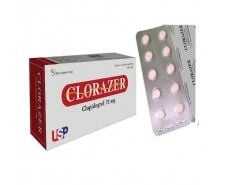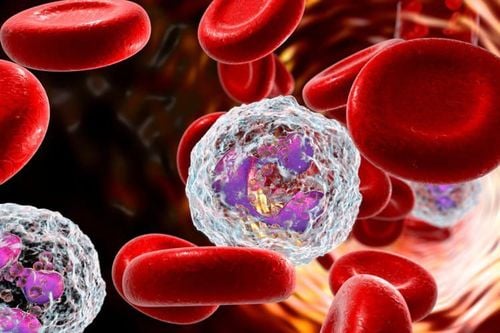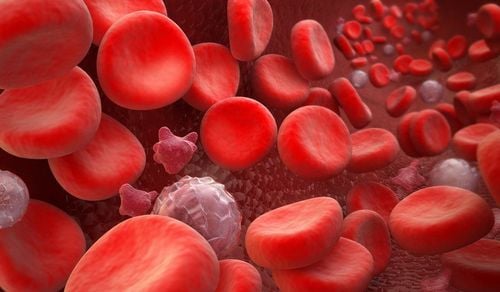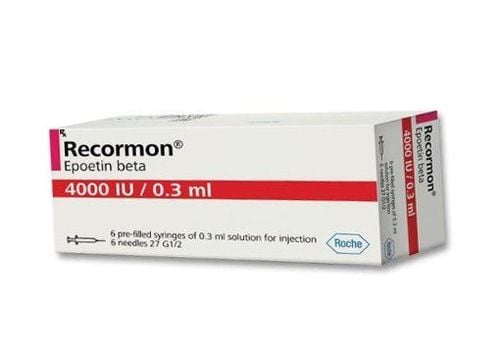This is an automatically translated article.
What is the use of Pegfilgrastim? Dosage, how to use and what to keep in mind when using the drug?... All information about Pegfilgrastim drug will be in the article below.
1. What is Pegfilgrastim?
Pegfilgrastim is an active ingredient in Pegfeel. This is an immunostimulant, a leucocyte-stimulating factor. Pegfilgrastim serves to stimulate the production of neutrophils.
The drug is produced as a solution for injection of 6mg/0.6ml in a prefilled syringe.
2. Uses of Pegfilgrastim
Pegfilgrastim binds to the G-CSF receptor. This is a G-CSF analog, it helps control the proliferation of progenitor cells and influences their maturation into mature neutrophils. In addition, Pegfilgrastim also stimulates the release of neutrophils from the bone marrow reservoir and reduces their maturation time.
Pegfilgrastim increases the phagocytic activity of mature neutrophils. In some patients receiving cytotoxic chemotherapy, Pegfilgrastim may accelerate neutrophil recovery. This leads to a decrease in the duration of the neutropenia phase.
3. Indications/Contraindications for taking Pegfilgrastim
Indications for use of Pegfilgrastim:
Pegfilgrastim is indicated for use in patients receiving myelosuppressive chemotherapy for non-myeloid malignancies to reduce the rate of infection. In addition, it is also indicated to be increased in patients exposed to acute myelosuppressive radiation. Pegfilgrastim helps to shorten the duration of neutropenia, reduce the rate of fever due to neutropenia. In addition, there was also a reduction in the rate of infections manifested by febrile neutropenia in patients treated with cytotoxic chemotherapy for malignancy (except chronic myeloid leukemia and other abnormal syndromes). marrow products). Contraindications:
Pegfilgrastim is contraindicated in all cases of hypersensitivity to the active substance or to any of the excipients in the preparation.
4. Dosage and how to use Pegfilgrastim
Adult dosing:
For adults (over 18 years): Use a single dose of Pegfilgrastim 6 mg (a single prefilled syringe. This dose is recommended for each chemotherapy cycle, given by injection. Administered subcutaneously approximately 24 hours after cytotoxic chemotherapy Pegfilgrastim treatment should be monitored by physicians experienced in oncology and/or hematology Elderly:
Pharmacokinetics of Pegfilgrastim in humans Elderly (> 65 years old) is similar to that in adults, so no dosage adjustment is necessary.
5. Side effects of drugs
Common effects:
Contact dermatitis; Painful injection site; Bone pain, musculoskeletal pain (muscle pain, joint pain, extremity pain, back pain, neck pain); Thrombocytopenia; Increased white blood cells ; headache, nausea; Non-cardiac chest pain. Uncommon side effects:
Capillary leak syndrome; Splenomegaly, often asymptomatic, ruptured spleen; Acute respiratory distress syndrome ; Hypersensitivity-type reactions, including skin rash, urticaria, angioedema, dyspnea, red edema, flushing and hypotension Serious allergic reactions, including anaphylaxis; Adverse pulmonary reactions (interstitial pneumonia, pulmonary edema, pulmonary infiltrates and pulmonary fibrosis); Hemoptisi; myelodysplastic syndrome ; Sickle cell anemia; Glomerulonephritis; Injection site reaction; Acute myeloid leukemia ; Increased uric acid; Sweet's syndrome; Vasculitis of the skin; Increased lactate dehydrogenase and alkaline phosphatase; Transient increase in ALT or AST. Rare side effects:
Aortic inflammation; Pulmonary hemorrhage; Respiratory failure or ARDS; Stevens-Johnson syndrome.
6. Note when taking medicine
Overdose:
No serious adverse effects have been observed in a small number of healthy volunteers and non-small cell lung cancer patients with single subcutaneous injection of 300mcg/kg. Adverse events were similar to those observed in patients receiving lower doses of Pegfilgrastim. Drug Interactions:
Because rapidly dividing myeloid cells are sensitive to cytotoxic chemotherapy, Pegfilgrastim should be administered approximately 24 hours after infusion of cytotoxic chemotherapy. In several clinical studies, Pegfilgrastim was used safely 14 days before chemotherapy. Co-administration of Pegfilgrastim with any chemotherapy agent has not been evaluated in patients. Increased bone marrow hematopoietic factor activity in response to growth factor therapy is associated with transient positive changes in bone imaging. This should be considered when reading bone imaging results. Several possible interactions with hematopoietic growth factors and with cytokines have not been specifically studied in clinical studies. The safety and efficacy of Pegfilgrastim have not been evaluated in patients receiving delayed myelosuppressive chemotherapy such as nitrosoureas. Some specific interaction or metabolism studies have not been conducted, however clinical studies have not indicated an interaction of Pegfilgrastim with any medicinal product. Above are the uses, doses and precautions when using Pegfilgrastim. To ensure the safety of your health and maximize the effectiveness of treatment, you need to take the medicine exactly as directed by your doctor.
Please dial HOTLINE for more information or register for an appointment HERE. Download MyVinmec app to make appointments faster and to manage your bookings easily.
Reference source: oncolink.org













